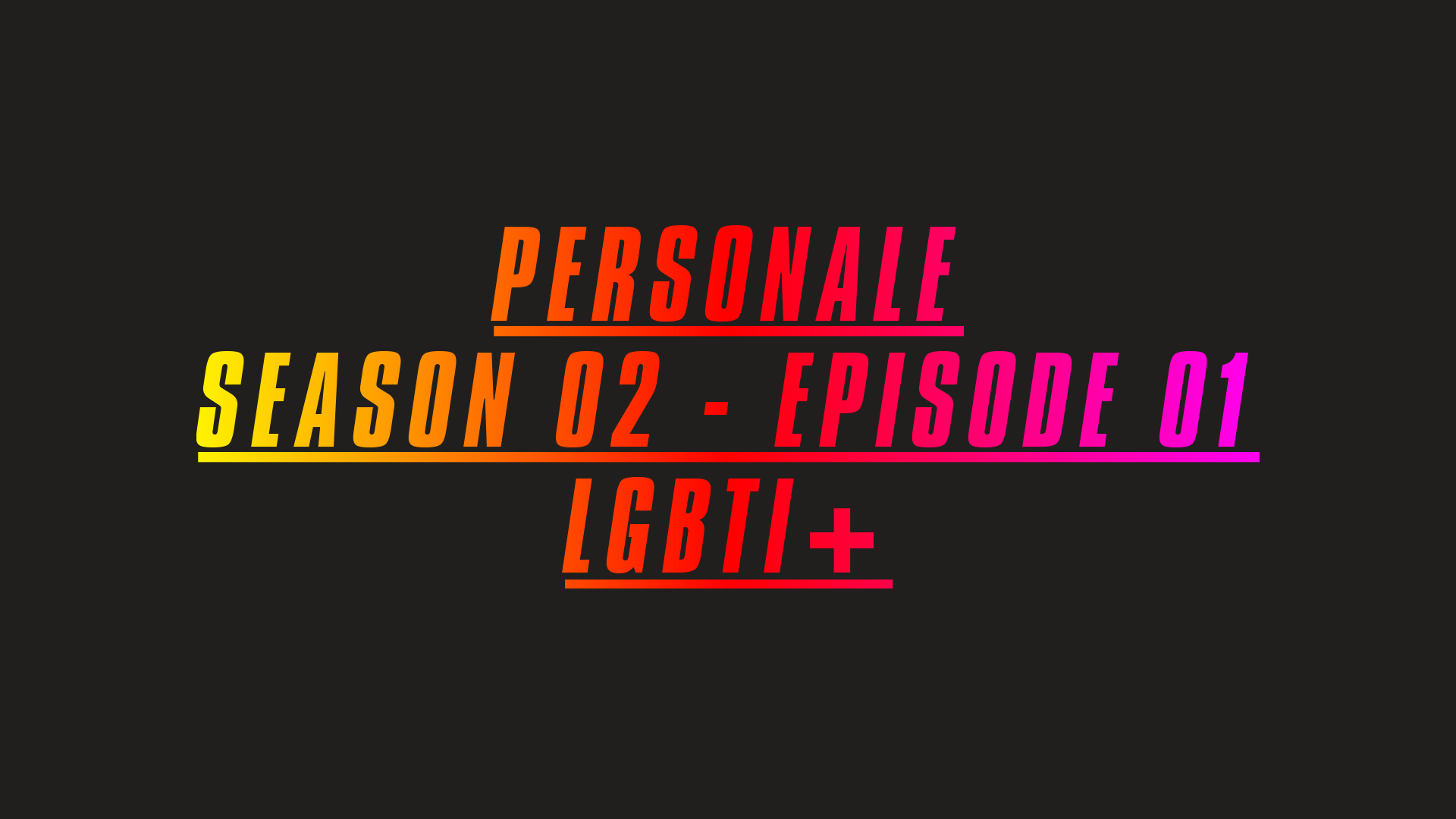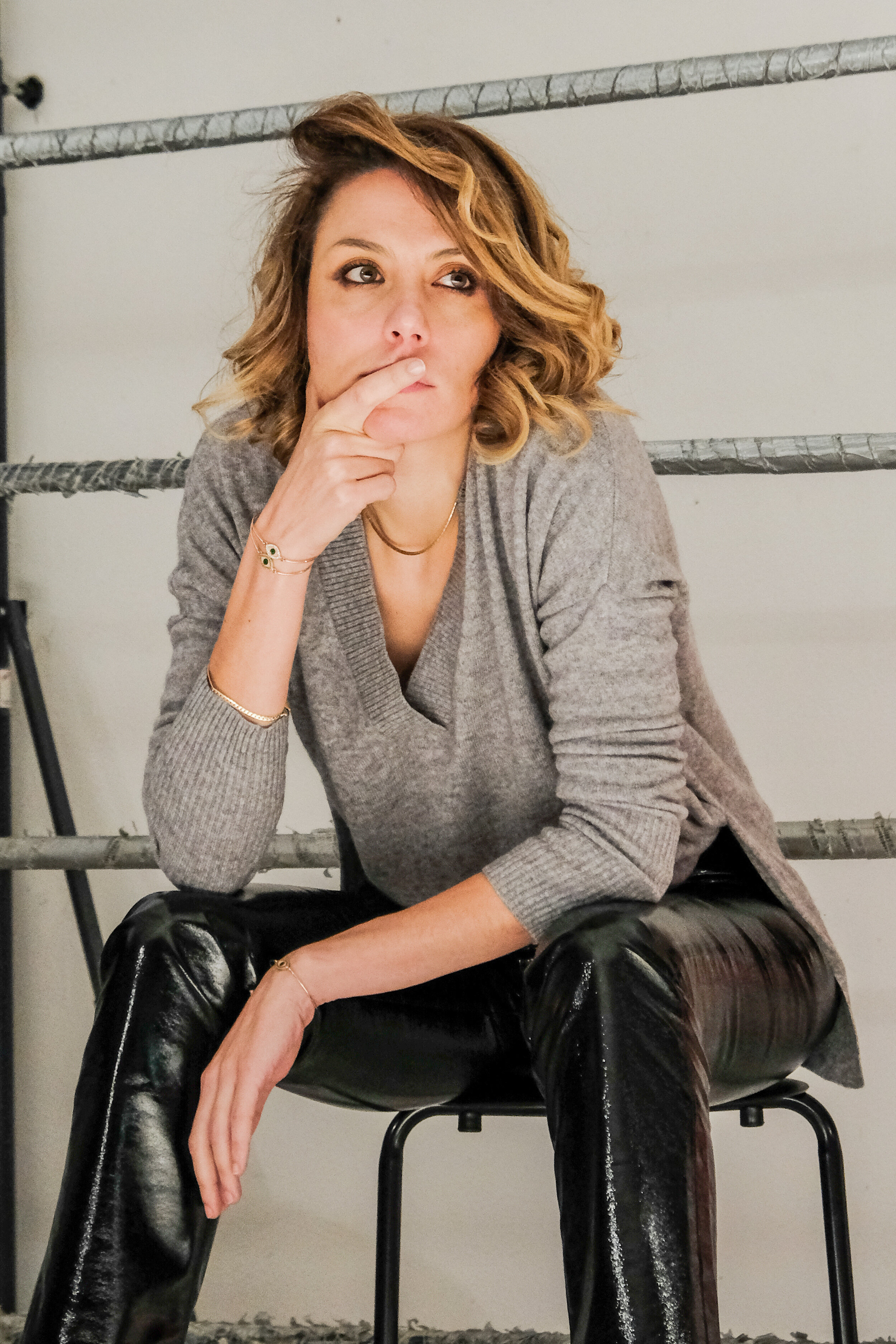Personale è il nuovo format di Talassa Magazine dedicato al mondo dei musei, delle gallerie e degli eventi culturali. È una mostra intima di volti, storie e punti di vista critici degli addetti ai lavori del settore. 3 stagioni da 5 episodi ciascuna. 15 interviste brevi e 15 grafiche inedite d’autore, ispirate alle risposte degli intervistati. Per ogni stagione una domanda è sempre legata a un tema preciso. Il tema della seconda stagione è LGBTI+.
Personale is the new format by Talassa Magazine focusing on the world of museums, galleries and cultural events. It is an intimate exhibition of faces, stories and critical points of view of the sector. It is 3 thematical seasons of 5 episode each; 15 short interviews and 15 original graphics inspired by the interviewees’ answers. For each season, one interview question will be based on a specific topic. The topic of the second season is LGBTI+.
di Clio Biasco, Gabriele Naddeo e Benedetto Puccia
Season 2: LGBTI+ – Episode 1:
Maria Chiara Valacchi – Cabinet / Paint!
Poster: Júlia Ventura Bruguera
photo by Paolo Biava
1. Chi sei e in cosa consiste il tuo ruolo?
Sono essenzialmente una curatrice di arte contemporanea, ma nel tempo il mio ruolo ha abbracciato altri ambiti quali la critica, il giornalismo – collaboro per varie testate italiane e sono contributor di Artforum – ma anche la fondazione di uno spazio non-profit indipendente dal nome Cabinet, e di una rivista online dedicata esclusivamente al media pittorico, chiamata Paint!
Who are you and what is your role?
I am essentially a contemporary art curator, but over time my role has embraced other areas such as criticism and journalism. I collaborate with various Italian newspapers and I am a contributor of Artforum. I havo founded an independent non-profit space, named Cabinet, and an online magazine exclusively focusing on painting as a media, called Paint!
2. Come racconteresti il luogo in cui lavori?
Non sono legata, per la mia impostazione freelance, ad un luogo specifico; posso descrivere però lo spazio dove a Milano, oramai da dieci anni, metto in pratica soli dialoghi inediti tra pittura e installazione/scultura, prevalentemente di artisti internazionali mid-career, spesso anche molto lontani tra loro sia per scelte formali che generazionali. Cabinet, a Milano in via Tadino 20, consiste in un unico e ampio spazio bianco che si diversifica dal canonico modello espositivo della white cube per la presenza di una grande finestra che inonda le opere di luce naturale. Una caratteristica architettonica che introduce nelle mostre un calore singolare e che nella maggior parte dei casi suggerisce il processo compositivo della stessa.
How would you describe your work place?
I am not tied to a specific place, since I am a freelancer. However, I can describe the space where in Milan, for ten years now, I only implement dialogues between painting and installation/sculpture which have not been previously shown. They are mainly related to mid-career international artists, who are often very distant from each other both in terms of formal and generational choices. Cabinet, in Milan in via Tadino 20, consists of a single and large white space that differs from the canonical display model of the “white cube” due to the presence of a large window that floods the works with natural light. It is an architectural feature that introduces a singular warmth to the exhibitions and which in most cases suggests the compositional process of the same.
3. Un progetto culturale o una mostra che ti ha cambiato la vita?
Il progetto Cabinet ha cambiato radicalmente il corso della mia professione; una mostra che invece ha segnato la mia crescita estetica è stata “Day is done” personale di Mike Kelley da Gagosian a New York.
A cultural project/museum exhibition that changed your life?
The Cabinet project has radically changed the course of my profession. On the other hand, an exhibition that marked my aesthetic growth was Mike Kelley’s personal “Day is done” from Gagosian in New York.
Poster by Júlia Ventura Bruguera
4. Una problematica attuale legata al tuo settore?
Credo che il vero problema attuale sia legato alla frequente reiterazione di vecchi schemi organizzativi, basati su un’economia oramai lontana e su una gestione dei modelli di offerta sempre meno adatti a ciò che avviene nella contemporaneità. Assistiamo da anni a una progressiva volatilità delle informazioni culturali e ad una gestione impalpabile dei linguaggi espressivi: una vertiginosa e quotidiana fuga in avanti che ci confonde e non ci permette di individuare le reali linee guida del nostro tempo.
Can you tell us about a current issue related to your sector?
I believe that the real current problem is related to the frequent reiteration of old organizational schemes, based on a now distant economy as well as the management of offer models less and less suitable for what happens in the contemporary world. For years, we have witnessed a progressive volatility of cultural information and an impalpable management of expressive languages. It is a dizzying and daily flight forward that confuses us and does not allow us to identify the real guidelines of our time.
5. Cosa pensi si possa fare nel concreto per migliorare la situazione al riguardo?
Penso che si debbano ridiscutere i termini del sistema partendo dalle fondamenta. È abbastanza evidente che il collezionismo è cambiato, come il ruolo dell’artista, del curatore e del gallerista a loro volta. Dovremmo iniziare a riappropriarci del fine ultimo e primario del fare arte, cioè quello di delineare i tratti del nostro tempo, istruire e divulgare cultura, attuando però processi comunicativi che si rivolgono ad una utenza che si è inevitabilmente trasformata.
What do you think the sector could do to address this issue?
I think that the terms of this system must be re-discussed, starting from the foundations. It is quite evident that collecting has changed, and so did the role of the artist, the curator and the gallery owner themselves. We should begin to gain back the ultimate and primary aim of making art, which is outlining the features of our time, educating and spreading culture, by implementing communication processes that address an audience that has inevitably changed.
6. Cosa credi si debba fare nel concreto per rappresentare adeguatamente la comunità LGBTI+ nel tuo ambito di lavoro?
Sarebbe auspicabile che tali questioni non venissero mai poste, specialmente in un ambiente che per sua definizione dovrebbe essere libero, aperto e radicato su basi culturali forti. Purtroppo ci sono e ci sono state questioni legate alla tematica, non ultima la polemica derivata dall’ultima nomina del direttore del Padiglione Italia (della Biennale di Venezia ndr), Milovan Farronato, reo esclusivamente di non rientrare nei canoni sessuali preordinati. Su questo topic dovrebbe essere assolutamente normale il libero arbitrio; trovo imbarazzante nel 2020 porsi ancora certe domande, dovrebbe essere tutto ampiamente sdoganato, accettato, socialmente digerito. Penso che per quanto ci riguarda la cosa più intelligente da fare è quella di valutare l’operato della persona, indipendentemente dal suo genere sessuale, inclinazione, volontà, colore e voglia.
What do you think the sector should do in order to better represent the LGBTI+ community?
It would be ideal that these questions should be never asked, especially within an environment that by its definition should be free, open and rooted on strong cultural foundations. Unfortunately, there are – and there have been – issues related to this topic, such as the recent controversy rising from the last appointment of the Italian Pavilion’s director (of the Venice Biennale – editor’s note), Milovan Farronato, exclusively “guilty” of not falling within the preordained sexual standards. Freewill should be absolutely normal on this topic. I find embarrassing in 2020 have to pose these kind of questions. It should be all widely accepted and socially digested. I think that as far as we are concerned, the smartest thing to do is to evaluate the person’s work, regardless of his or her gender, inclination, will, color and desire.
7. Avendo in mente il tema della stagione, ti va di consigliarci 1 addetto ai lavori, 1 mostra o un progetto culturale e 1 libro o catalogo?
Personaggio: Leigh Bowery, artista performer, modello di Lucien Freud, icona della moda d’avanguardia.
Mostra: SPECTROSYNTHESIS II – Exposure of Tolerance: LGBTQ in Southeast Asia, la più grande mostra a tema gender mai realizzata nel continente asiatico a cura di Chatvichai Promadhattavedi.
Libro: I travestiti, Lisetta Carmi, Published by Essedì Editrice, nel 1972. Un reportage della fotografa Carmi dedicata alla comunità trans genovese, la prima ad averli omaggiati.
Focusing on this season’s topic, would you like to suggest 1 person from the sector that inspires you, then 1 exhibition or cultural project and 1 book or catalogue that we should not miss?
Person: Leigh Bowery, performer artist, Lucien Freud’s model, avant-garde fashion icon.
Exhibition: SPECTROSYNTHESIS II – Exposure of Tolerance: LGBTQ in Southeast Asia, the largest gender-themed exhibition ever created on the Asian continent by Chatvichai Promadhattavedi.
Book: I travestiti, Lisetta Carmi, Published by Essedì Editrice, in 1972. A reportage by the photographer Carmi dedicated to the trans Genoese community, the first to have paid homage to them.



